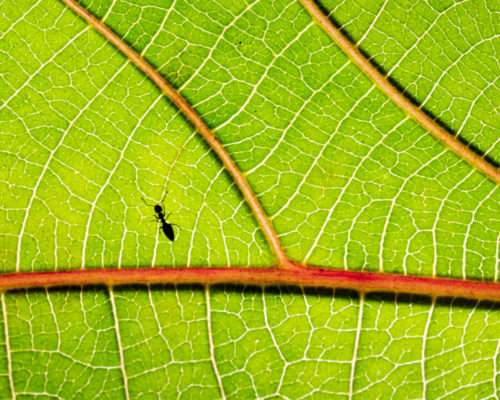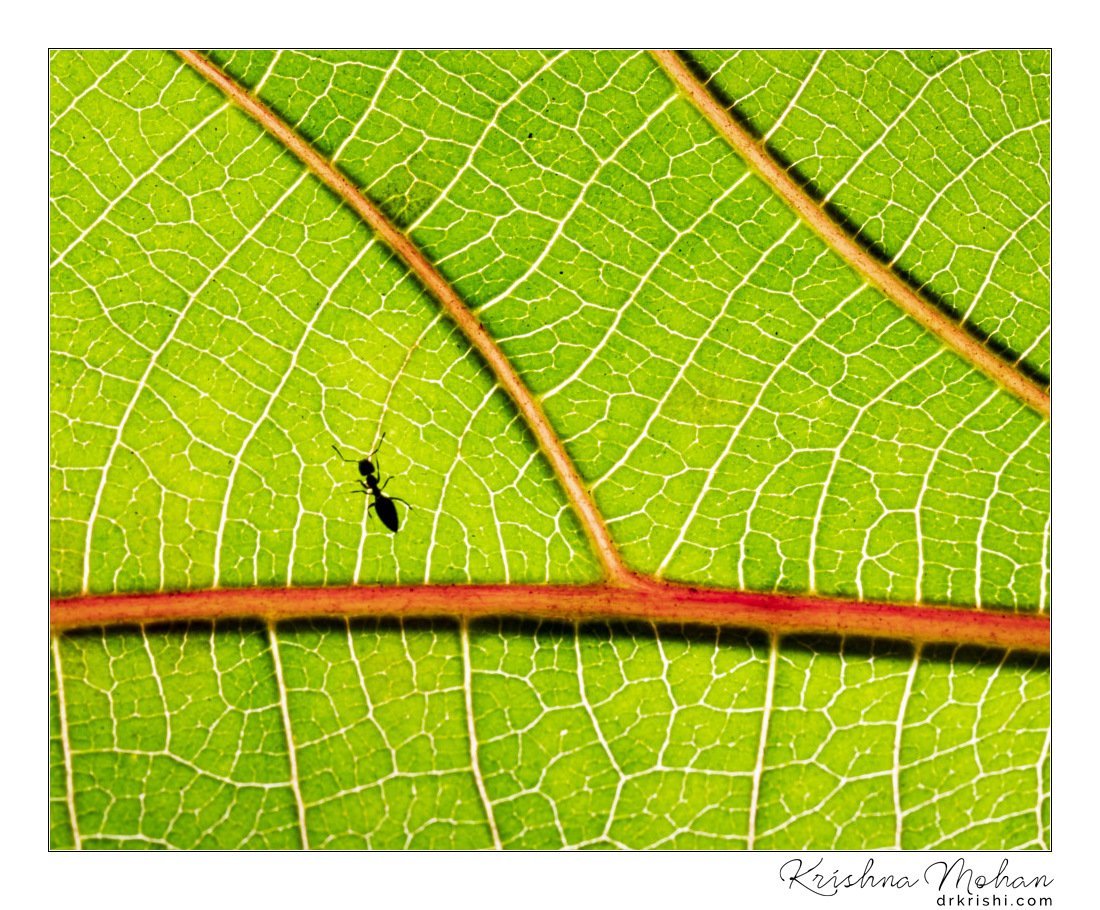
Patterns exist everywhere in nature. The venation patterns of the leaf are an especially pretty interesting pattern. When I saw Common Broad Acrobat Ant (Crematogaster subnuda) on the broad leaf of one of the most widely occurring early successional woody species in my garden, Macaranga peltata, my initial instinct was to take a closeup macro.

I was using my Sony A7R Mark III with Sony FE 90 mm f/2.8 Macro G OSS lens and Venus Optics Laowa KX-800 Flexible Macro Twin Flash. This flash has a twin flash design with each head mounted on its own 18.9″ long flexible arm. That octopus-like arm gave me an idea to use it as a backlight behind the broad leaves of Macaranga peltata. I pushed the flexible arm forwards and made the flash heads facing towards the lens illuminating the leaf from the back and creating a dark silhouette of Crematogaster ant over the venation of the leaf. The result is what you see here.

Common Broad Acrobat Ant (Crematogaster subnuda) is a very common ant widely distributed throughout India. They are also known as cocktail ants because of their habit of raising their abdomens when alarmed. This is a bright chestnut red coloured ant (3 to 3.5 mm in length) with the gaster dark, nearly black in colour. Head is smooth with a few striae. Their antenna is slender, with a long scape that reaches beyond the top of the head. The antennae are 12-segmented and the last three apical segments thicken to form a distinct club.

Pronotum is huge and rounded anteriorly, followed by a small mesonotum and a sloping propodeum. Propodeal spines are short and pointed. Petiole has a flat top and anteriorly semi-circular in front. Postpetiole is grooved longitudinally. As in other species of Crematogaster, the cordate gaster is raised high up vertically in the air while foraging and raised further higher when they detect intrusion. In the open scrublands, these ants construct carton nests but otherwise nest at branch intersections.

Macaranga peltata belongs to Euphorbiaceae (Castor family). It is also known as Kenda or Chandada. In Kannada: Chandrakanta, Chandakanni, Tulu: Uppalige, Malayalam: Vatta. It is a resinous tree, to 10 m tall. Young parts are velvet hairy. Leaves are 20-50 x 12-21 cm, alternately arranged, circular or broadly ovate, entire or minutely dentate, palmately 9-nerved. The leaf stalk is attached on the lower surface of the leaf, not on the base.

Macaranga peltata are early-successional or early-secondary tree species. They are more common in forest edges, clearings, and secondary forests than in mature forest interiors.

Yellow-green flowers occur in long panicles in leaf axils in the months of January to February. Male flowers are minute, numerous, and clustered in the axils of large bracts. One round, black seed is in a spherical capsule 4 to 5 mm across. its leaves are commonly used for flavouring. The dough & jaggery is often flattened on a leaf to soak in the flavour while being steamed. Today the major use of Macaranga peltata is for making wooden pencils and in the plywood industry.

